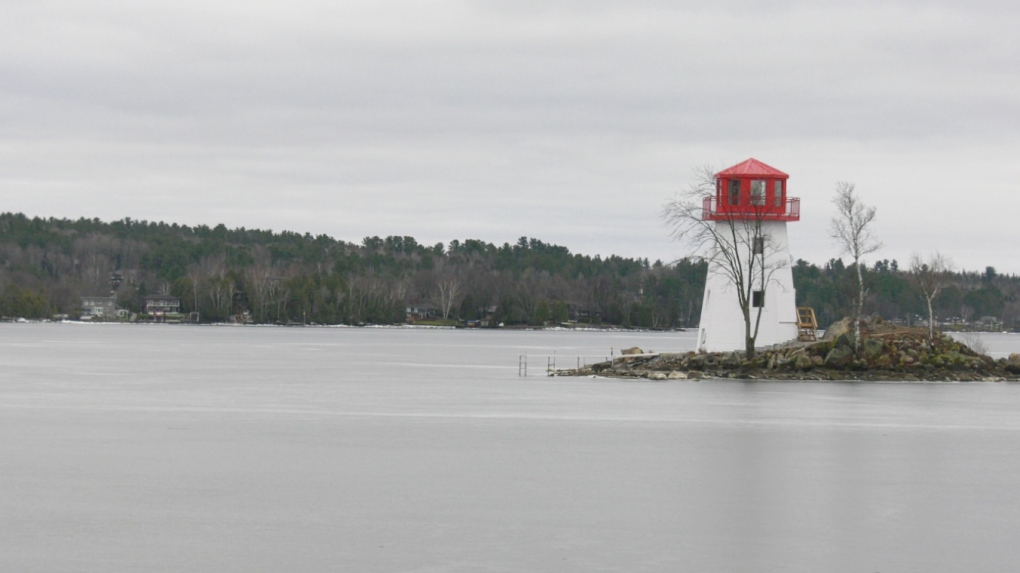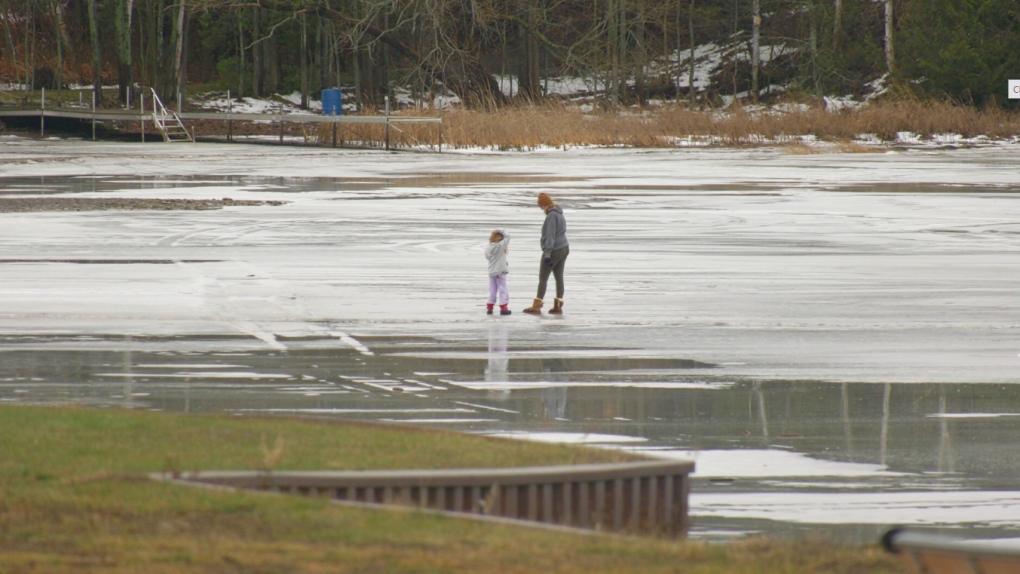Fire officials stress safety as ice fishing season nears
Ice fishing season is upon us. That means many avid anglers will be dropping a line in to snag the big one.
With mild temperatures as the season kicks off Jan. 1, fire officials are stressing that safety must be the top priority before taking huts out on lakes or rivers.
 With mild temperatures as the ice-fishing season kicks off Jan. 1, fire officials are stressing that safety must be the top priority before taking huts out on lakes or rivers. (Eric Taschner/CTV News)
With mild temperatures as the ice-fishing season kicks off Jan. 1, fire officials are stressing that safety must be the top priority before taking huts out on lakes or rivers. (Eric Taschner/CTV News)
Steph Leroux has been fishing since he was a young boy. When it’s ice fishing time, he always knows to check ice thickness before taking his shack out.
"Have yourself a spud bar or any kind of measuring device to cut a hole and measure it," Leroux said.
Tuesday morning, he was checking the thickness at the Callander Bay shore. It was around eight inches thick, but he knows ice can be unpredictable.
A freeze-thaw patch and a mild end to 2024 mean some ice has significantly weakened in certain places. Ice that’s thick enough to stand on in one part of the lake could be much weaker in other areas.
"Anglers need to keep that angle of the spud inside the hole as they’re cutting around. That will give you a true reading," he said.
It’s recommended people stay off the ice when it’s less than four inches thick.
"I’d also suggest they wear a PFD (personal flotation device). If you go through the ice, a PFD will help you immensely. Bring rope and bring a cell phone,” Callander Fire Chief Todd Daley said.
 With mild temperatures as the ice-fishing season kicks off Jan. 1, fire officials are stressing that safety must be the top priority before taking huts out on lakes or rivers. (Eric Taschner/CTV News)
With mild temperatures as the ice-fishing season kicks off Jan. 1, fire officials are stressing that safety must be the top priority before taking huts out on lakes or rivers. (Eric Taschner/CTV News)
Fire officials warn that no ice is considered safe. But, for anyone willing to step out on a frozen lake, remember the colour of ice can indicate its strength.
“Clear, black ice -- so not ice that’s mixed with the black and white -- that’s the strongest ice and it looks clear but it’s not," Daley said.
Callander firefighters are trained in ice rescue. They stress, however, that they only respond to human rescue and not animals.
If you fall through the ice, Daley said the most important thing is not to panic, breathe, get yourself in a horizontal position, kick and pull as hard as you up can toward the surface.
Once you get to the surface, roll away from the hole, then get to your knees and crawl away, before getting comfortable to walk again.
- Download the CTV News app now
- Get local breaking news alerts
- Daily newsletter with the top local stories emailed to your inbox
"The cold water is going to cause you to panic. I make it sound easy," Daley said.
"But it’s a bit of work. It’s all about not panicking and making a plan."
Officials said the weakest ice will be in the centre and along the edge of the water. Avoid streams and flowing water, even if they look frozen. Avoid ice that has recently frozen, thawed, and then frozen again. The safer place for skating or walking is on a still body of water, such as a lake.
"Just be smart out there," Daley said.
CTVNews.ca Top Stories

Liberal caucus chairs meeting to talk Trudeau today, PM attends Canada-U.S. cabinet committee
Prime Minister Justin Trudeau is back in Ottawa today, but with him yet to signal he's ready to address the snowballing resignation calls, the Liberal caucus' regional chairs have called a meeting today to discuss next steps.
When do I receive federal benefits this year? Payment dates for 2025
From the Canada Child Benefit to Old Age Security, federal payment dates have been determined for 2025. Find out when you can expect your payments.
Sea and Himalayan salts recalled in Canada: 'Do not use, serve or distribute'
Two brands of sea and Himalayan salt are being recalled in Canada due to pieces of plastic found in the products.
Calgary woman stranded in Mexico after husband's death during diving trip
A Calgary woman is struggling to return home after her husband died while diving in Mexico, leaving her stranded and facing financial hardship.
Judge sets Trump's sentencing in hush money case for Jan. 10, but signals no jail time
In an extraordinary turn, a judge Friday set U.S. president-elect Donald Trump's sentencing in his hush money case for Jan. 10, but indicated he wouldn't be jailed.
'Mystery volcano' that erupted and cooled Earth in 1831 has finally been identified
An unknown volcano erupted so explosively in 1831 that it cooled Earth's climate. Now, nearly 200 years later, scientists have identified the 'mystery volcano.'
N.S. community shocked by deaths of father, daughter; suspect was wanted in Toronto shooting
A Nova Scotia community is mourning the loss of two of its members after they were shot and killed in Halifax on New Year’s Eve.
Ontario aiming to send out $200 rebate cheques later this month or early February
Ontarians should receive their $200 rebate cheque from the province by the end of January or early February, a government spokesperson confirmed in an email Friday.
FORECAST Weather warnings issued for nearly all of Canada's provinces and territories
Nearly every province and territory in Canada is subject to weather advisories heading into the weekend.

































